Finding France in Japan / Japan’s Mont-Saint-Michel in Nagasaki Pref. Captivates Tourists
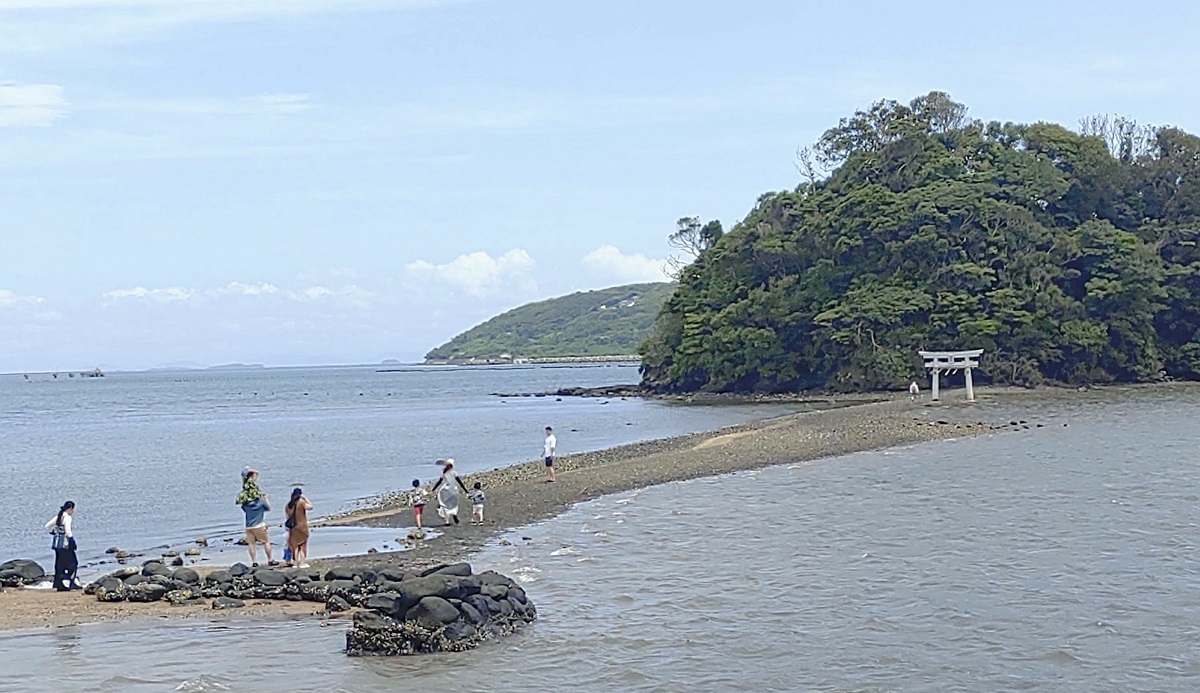
People walk on a path to an island in the Uchime Bay in Iki, Nagasaki Prefecture.
By Kenji Iwaasa
6:00 JST, August 5, 2024
This is the second installment in a series focusing on places and culture in Japan that evoke the atmosphere of France as athletes are now battling it out in the Paris Olympics.
***
Shortly after noon on July 7, the day of the Tanabata festival, a group of tourists began to gather at a bay on the eastern side of Iki Island, a remote island in Nagasaki Prefecture.
They gazed at a small island ahead of them. After a while, an about 200-meter-long path emerged from the sea leading to the island. About 30 minutes later, the path connected the bay and the island, and the tourists walked along it.
The scene was reminiscent of Mont Saint-Michel, a small island in France registered on the UNESCO World Heritage List.
The small island has been called Iki’s Mont-Saint-Michel since 2015 when Uchime Bay was designated as a component of a Japan Heritage site dubbed “Iki, Tsushima, and the Goto Islands — Japan’s Ancient Bridge to Asia.”
Just as France’s island of Mont-Saint-Michel has an abbey, Iki Island has Kojima Shrine with a history of roughly 400 years.
Recently, the shrine has become a popular place for fulfilling love-related wishes.
“This place is so mysterious and beautiful. I feel healed,” said a 38-year-old company employee from Fukuoka.
After visiting Mont-Saint-Michel in 2017, she learned about Kojima Shrine. She chose to visit the shrine on July 7, her birthday.
After praying at the shrine for good health and a good marriage, she walked around the island and enjoyed taking pictures.
The island belongs to the shrine’s parishioners, called ujiko.
The island is fondly known as “kojima-san” or “manju-jima,” according to Kazuhira Suenaga, the head of the ujiko association. However, the stone steps leading up to the shrine are on the verge of collapsing due to the throngs of visitors.
A town council organized by residents crowdfunded for money to repair the approach to the shrine. Construction is scheduled to be completed in time for a festival in October.
“I’m happy that so many people love this shrine,” said Suenaga. “I want to protect it since the shrine is a source of pride in our community.”
There are other tourist areas that remind visitors of Mont-Saint-Michel. One is Itsukushima Shrine’s otorii gate on Miyajima Island in Hatsukaichi, Hiroshima Prefecture.
Hatsukaichi City held a ceremony at the shrine in June to commemorate the 15th anniversary of its tourism and friendship city agreement with Mont-Saint-Michel and hosted a delegation from France.
Japanese triumphal arches
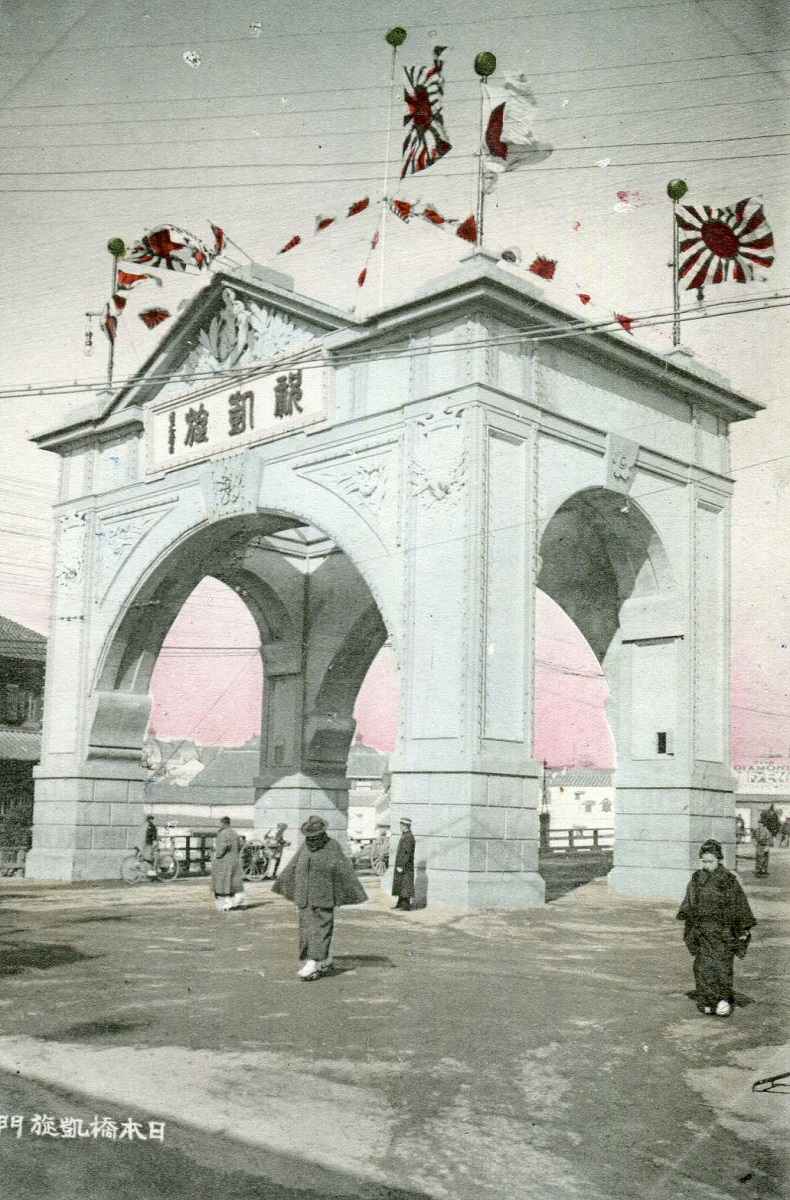
A postcard depicting the Nihonbashi triumphal arch
The Arc de Triomphe, a well-known triumphal arch in Paris, was commissioned by Napoleon I to commemorate his victory at the Battle of Austerlitz in 1805.
Athletes will run near the arch during the marathon at the Paris Olympics.
Arches like the one in Paris were built in Japan to commemorate the 1905 victory in the Russo-Japanese War.
Back then, local volunteers hurriedly constructed wooden Japanese versions of the Arc de Triomphe in Shimbashi, Ueno, Asakusa, Shinagawa and other locations in Tokyo.
“The arches were a popular attraction at the time. Even at that time, people had respect for France,” said Junichi Higuchi, a collector of old postcards and the eighth-generation owner of Benmatsu Sohonten, a long-established bento store in Nihonbashi, Tokyo.
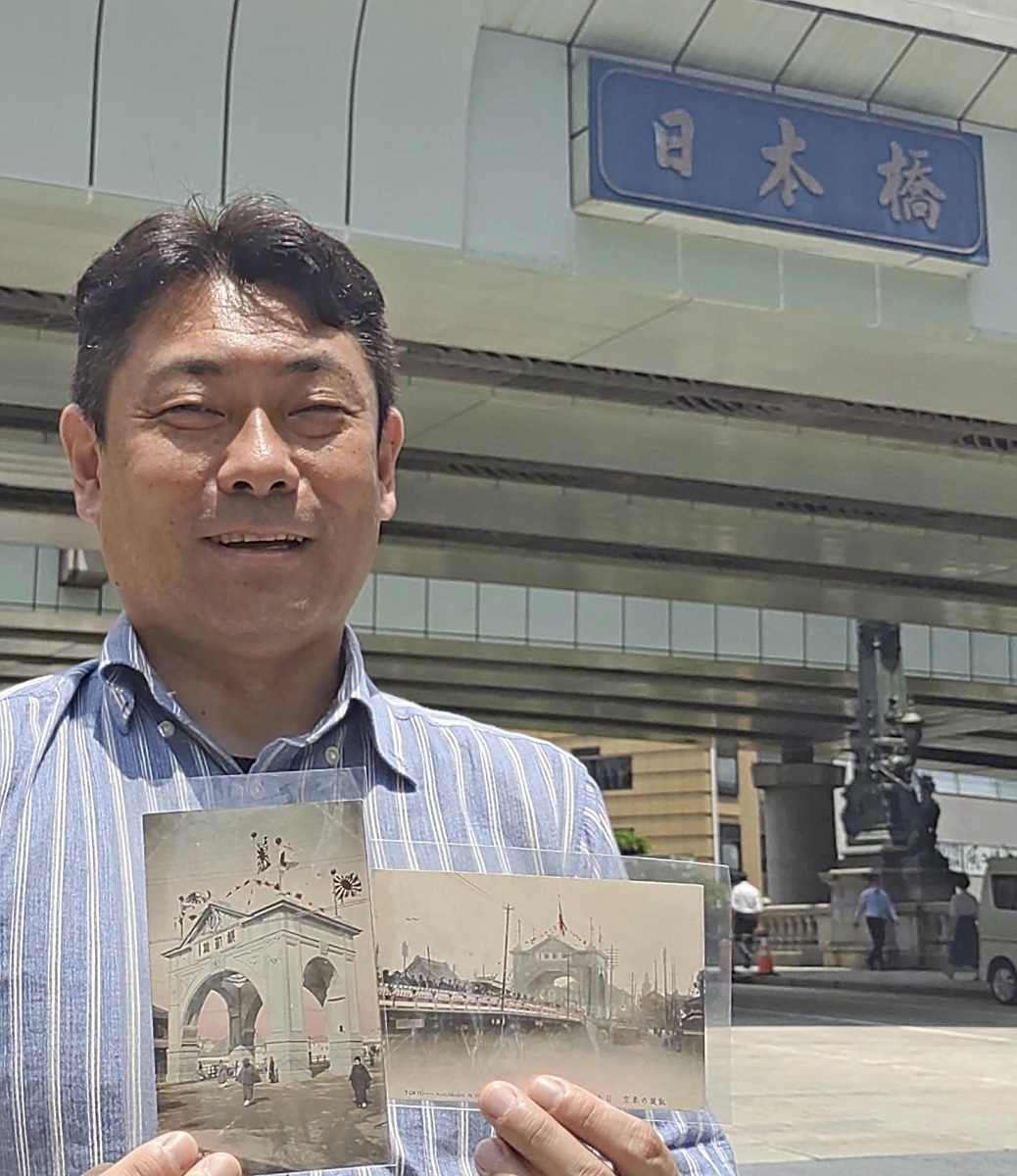
Junichi Higuchi
An arch was also built at the south end of Nihonbashi Bridge and was illuminated at night.
Higuchi has collected more than 30 postcards of Japanese triumphal arches, including those sent back home by French visitors to Japan. He has been posting photos of the postcards on his website and in booklets.
“It is exciting just to imagine the lively atmosphere that existed here more than 100 years ago,” he said.
The triumphal arch in Hamamatsu is one such arch that still exists. The arch was built in 1906 and is designated as a national tangible cultural property.
Measuring about three meters wide and three meters high, the arch was constructed using the sturdy Flemish brick bond, according to the city’s cultural property department.
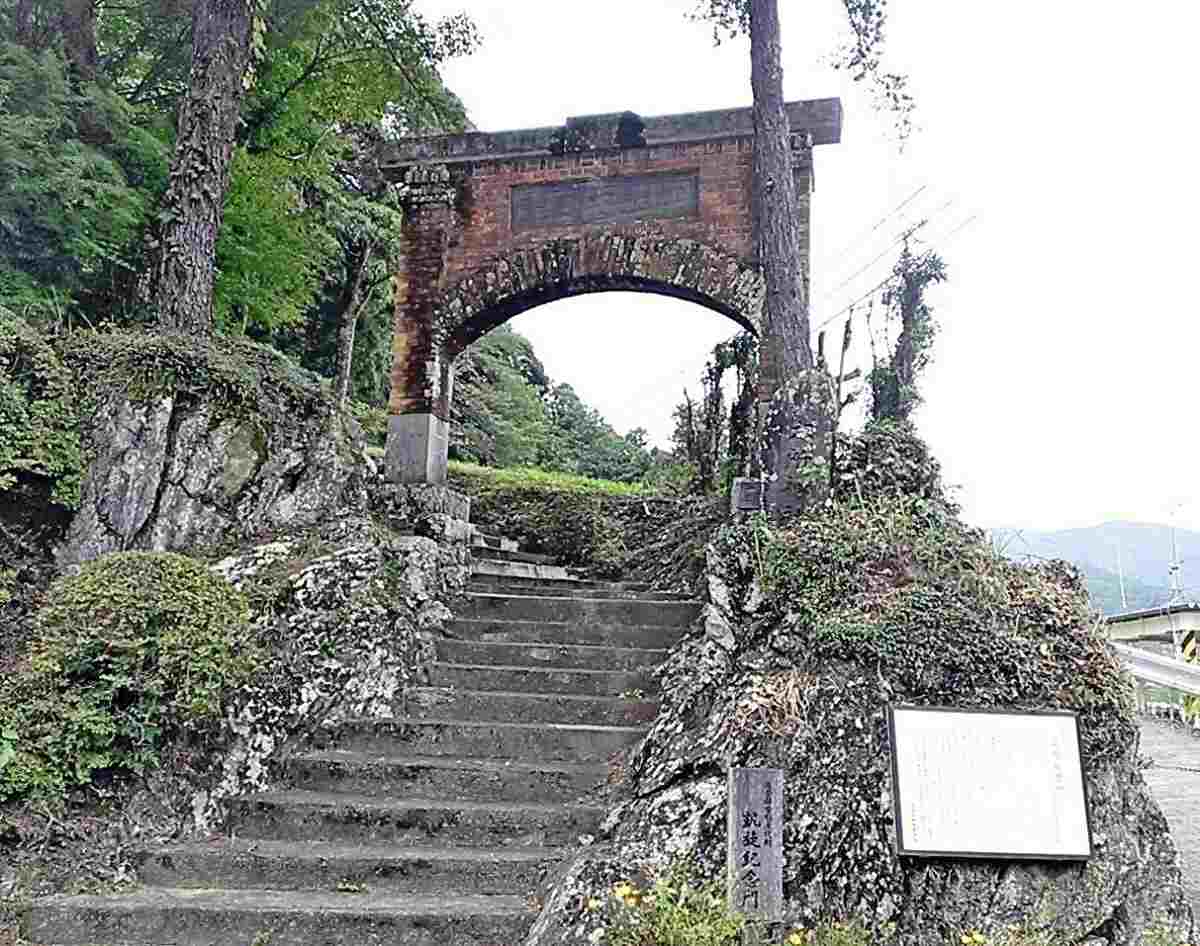
The triumph arch in Hamamatsu
The names of soldiers who departed for war, those who died in battle and donors are engraved on the base of the arch, which has been preserved for future generations.
Sakae Yamamoto from the Shibukawa Rokusho Shrine behind the arch has visited the Arc de Triomphe in France. Yamamoto said the triumphal arch in Hamamatsu, which has been a familiar sight since childhood, is no less magnificent than the original, even if it is smaller.
Visiting these Japanese tourist attractions should allow visitors to vicariously experience French sightseeing in Japan.
Popular Articles
Popular articles in the past 24 hours
-

Japan, China Continue Trading Barbs Over Radar Incident; Tokyo Re...
-

Japanese Lawmakers Support Continued Ban on Sports Betting
-

JAXA Stops Rocket Launch Broadcast amid Engine Issues
-

Figure Skater Kaori Sakamoto Set to Compete at Olympics in Milan,...
-

JAXA Launches 8th H3 Rocket from Japan’s Kagoshima Pref.
-

Japan's Nikkei Stock Average Jumps on Weaker Yen, Renewed AI Opti...
-

Quake Beneath Tokyo: Utilize New Damage Estimates for Disaster Ma...
-

Japan's Govt to Subsidize Licensed Hunters Amid Efforts to Addres...
Popular articles in the past week
-

Israeli Tourists Refused Accommodation at Hotel in Japan’s Nagano...
-

U.S. Senate Resolution Backs Japan, Condemns China's Pressure
-

Kenta Maeda Joins Rakuten Eagles; Returns from American MLB to Ja...
-

Sharp Decline in Number of Chinese Tourists But Overall Number of...
-

China Attacks Japan at U.N. Security Council Meetings; Representa...
-

Japan Set to Participate in EU's R&D Framework, Aims to Boost Coo...
-

Japan Backs Public-Private Cooperation on Economic Security; Nati...
-

Bus Bound for Hokkaido's New Chitose Airport Catches Fire Wednesd...
Popular articles in the past month
-

Keidanren Chairman Yoshinobu Tsutsui Visits Kashiwazaki-Kariwa Nu...
-

Tokyo Economic Security Forum to Hold Inaugural Meeting Amid Tens...
-

Imports of Rare Earths from China Facing Delays, May Be Caused by...
-

University of Tokyo Professor Discusses Japanese Economic Securit...
-

Japan Pulls out of Vietnam Nuclear Project, Complicating Hanoi's ...
-

Govt Aims to Expand NISA Program Lineup, Abolish Age Restriction
-

Blanket Eel Trade Restrictions Rejected
-

Key Japan Labor Group to Seek Pay Scale Hike
"Society" POPULAR ARTICLE
-

M4.9 Earthquake Hits Tokyo, Neighboring Prefectures
-

Israeli Tourists Refused Accommodation at Hotel in Japan’s Nagano Pref., Prompting Protest by Israeli Embassy and Probe by Prefecture
-

M7.5 Earthquake Hits Northern Japan; Tsunami Waves Observed in Hokkaido, Aomori and Iwate Prefectures
-

Tsukiji Market Urges Tourists to Avoid Visiting in Year-End
-
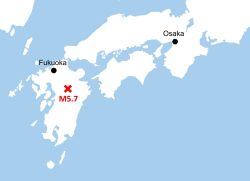
M5.7 Earthquake Hits Japan’s Kumamoto Pref., Measuring Upper 5 Intensity, No Tsunami Expected
JN ACCESS RANKING
-

Keidanren Chairman Yoshinobu Tsutsui Visits Kashiwazaki-Kariwa Nuclear Power Plant; Inspects New Emergency Safety System
-

Tokyo Economic Security Forum to Hold Inaugural Meeting Amid Tense Global Environment
-

Imports of Rare Earths from China Facing Delays, May Be Caused by Deterioration of Japan-China Relations
-

University of Tokyo Professor Discusses Japanese Economic Security in Interview Ahead of Forum
-

Japan Pulls out of Vietnam Nuclear Project, Complicating Hanoi’s Power Plans







